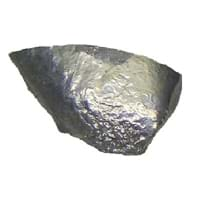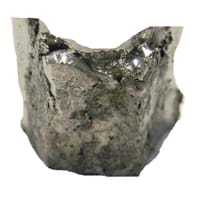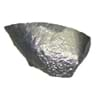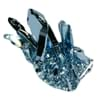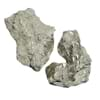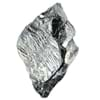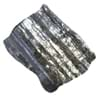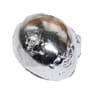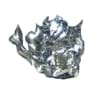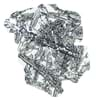Iridium vs Nickel
Periodic Table
Symbol
Ir
Ni
Group Number
9
9
10
8
Period Number
6
4
Block
d block
d block
Element Family
Transition Metal
Transition Metal
CAS Number
7439885
99+
7440020
99+
Space Group Name
Fm_ 3m
Fm_ 3m
Space Group Number
225.00
2
225.00
2
Facts
Interesting Facts
- Iridium element occurs as natural alloys of Platinum and Osmium.
- Iridium element is known as the most corrosion resistance metal .
- Zinc metal found (obtain) in many forms like granules, foil, dust and in a powder form.
- After iron, Zinc metal the second most abundant element in the earth crust.
Sources
Found in Minerals, Mining, Ores of Minerals
Found in Minerals, Mining, Ores of Minerals
History
Who Discovered
Smithson Tennant
Axel Fredrik Cronstedt
Discovery
In 1803
In 1751
Abundance
Abundance In Universe
2 * 10-7 %
22
6 * 10-3 %
4
Abundance In Sun
~0.0000002 %
25
~0.008 %
3
Abundance In Meteorites
0.00 %
29
1.30 %
3
Abundance In Earth's Crust
0.00 %
99+
0.01 %
15
Abundance In Oceans
Not Available
0.00 %
13
Abundance In Humans
Not Available
0.00 %
14
Uses
Uses & Benefits
- Iridium has an anti corrosion properties and it is used in special alloy with Osmium metal and that alloy is used in pen tips and compass bearings.
- It has corrosion resistance and hence it is used to plate other metals.
- Its alloys are very useful; Nichrome alloy is used in the hot coil of toasters and electric oven.
Industrial Uses
Automobile Industry, Electrical Industry, Electronic Industry
Automobile Industry, Electrical Industry, Electronic Industry
Medical Uses
NA
NA
Other Uses
Alloys
Alloys
Biological Properties
Toxicity
Toxic
Toxic
Present in Human Body
Yes
Yes
In Blood
Not Available
0.05 Blood/mg dm-3
17
In Bone
Not Available
0.70 p.p.m.
18
Physical Properties
Melting Point
2,410.00 °C
7
1,453.00 °C
31
Boiling Point
4,527.00 °C
10
2,732.00 °C
38
Appearance
Physical State
Solid
Solid
Color
Silvery White
Silver
Luster
Metallic
Metallic
Hardness
Mohs Hardness
6.50
5
4.00
10
Brinell Hardness
1,670.00 MPa
5
667.00 MPa
18
Vickers Hardness
1,760.00 MPa
3
638.00 MPa
16
Speed of Sound
4,825.00 m/s
13
4,900.00 m/s
12
Optical Properties
Reflectivity
78.00 %
6
72.00 %
9
Allotropes
No
No
α Allotropes
Not Available
Not Available
β Allotropes
Not Available
Not Available
γ Allotropes
Not Available
Not Available
Chemical Properties
Chemical Formula
Ir
Ni
Isotopes
Known Isotopes
34
5
25
14
Electronegativity
Pauling Electronegativity
2.20
4
1.91
10
Sanderson Electronegativity
Not Available
1.94
10
Allred Rochow Electronegativity
1.55
11
1.75
3
Allen Electronegativity
1.68
17
1.88
6
Electropositivity
Pauling Electropositivity
1.80
99+
2.09
99+
Ionization Energies
1st Energy Level
880.00 kJ/mol
9
737.10 kJ/mol
25
2nd Energy Level
1,600.00 kJ/mol
35
1,753.00 kJ/mol
25
3rd Energy Level
Not Available
3,395.00 kJ/mol
17
4th Energy Level
Not Available
5,300.00 kJ/mol
15
5th Energy Level
Not Available
7,339.00 kJ/mol
15
6th Energy Level
Not Available
10,400.00 kJ/mol
9
7th Energy level
Not Available
12,800.00 kJ/mol
10
8th Energy Level
Not Available
15,600.00 kJ/mol
10
9th Energy Level
Not Available
18,600.00 kJ/mol
10
10th Energy Level
Not Available
21,670.00 kJ/mol
14
11th Energy Level
Not Available
30,970.00 kJ/mol
7
12th Energy Level
Not Available
34,000.00 kJ/mol
7
13th Energy Level
Not Available
37,100.00 kJ/mol
7
14th Energy Level
Not Available
41,500.00 kJ/mol
8
15th Energy Level
Not Available
44,800.00 kJ/mol
10
16th Energy Level
Not Available
48,100.00 kJ/mol
12
17th Energy Level
Not Available
55,101.00 kJ/mol
11
18th Energy Level
Not Available
58,570.00 kJ/mol
12
19th Energy Level
Not Available
148,700.00 kJ/mol
1
20th Energy Level
Not Available
159,000.00 kJ/mol
3
21st Energy Level
Not Available
169,400.00 kJ/mol
3
22nd Energy Level
Not Available
182,700.00 kJ/mol
2
23rd Energy Level
Not Available
194,000.00 kJ/mol
2
Electrochemical Equivalent
1.14 g/amp-hr
99+
1.10 g/amp-hr
99+
Electron Work Function
4.55 eV
13
5.15 eV
2
Other Chemical Properties
Flammable, Ionization, Radioactive Isotopes, Radioactivity
Anti Corrosion, Ionization, Radioactive Isotopes
Atomic Properties
Atomic Number
77
39
28
99+
Electron Configuration
[Xe] 4f14 5d7 6s2
[Ar] 3d8 4s2 Or [Ar] 3d9 4s1
Crystal Structure
Face Centered Cubic (FCC)
Face Centered Cubic (FCC)
Crystal Lattice
FCC-Crystal-Structure-of-Iridium.jpg#100
FCC-Crystal-Structure-of-Nickel.jpg#100
Atom
Number of Protons
74
99+
28
99+
Number of Neutrons
110
27
31
99+
Number of Electrons
74
99+
28
99+
Radius of an Atom
Atomic Radius
136.00 pm
99+
124.00 pm
99+
Covalent Radius
141.00 pm
99+
124.00 pm
99+
Van der Waals Radius
202.00 pm
27
163.00 pm
40
Atomic Weight
192.22 amu
34
58.69 amu
99+
Atomic Volume
9.53 cm3/mol
99+
6.59 cm3/mol
99+
Adjacent Atomic Numbers
Valence Electron Potential
140.00 (-eV)
5
42.00 (-eV)
99+
Lattice Constant
383.90 pm
26
352.40 pm
99+
Lattice Angles
π/2, π/2, π/2
π/2, π/2, π/2
Lattice C/A Ratio
Not Available
Not Available
Mechanical Properties
Density
Density At Room Temperature
22.56 g/cm3
10
8.91 g/cm3
99+
Density When Liquid (at m.p.)
19.00 g/cm3
3
7.81 g/cm3
29
Tensile Strength
2,000.00 MPa
2
345.00 MPa
11
Viscosity
Not Available
Not Available
Vapor Pressure
Vapor Pressure at 1000 K
Not Available
0.00 (Pa)
31
Vapor Pressure at 2000 K
0.00 (Pa)
25
19.50 (Pa)
6
Elasticity properties
Shear Modulus
210.00 GPa
2
76.00 GPa
12
Bulk Modulus
320.00 GPa
3
180.00 GPa
9
Young's Modulus
528.00 GPa
1
200.00 GPa
11
Poisson Ratio
0.26
22
0.31
13
Other Mechanical Properties
NA
Ductile
Magnetic Properties
Magnetic Characteristics
Specific Gravity
21.78
3
8.90
33
Magnetic Ordering
Paramagnetic
Ferromagnetic
Permeability
Not Available
0.00 H/m
2
Susceptibility
Not Available
600.00
2
Electrical Properties
Electrical Property
Conductor
Conductor
Resistivity
47.10 nΩ·m
99+
69.30 nΩ·m
39
Electrical Conductivity
0.19 106/cm Ω
10
0.14 106/cm Ω
13
Electron Affinity
151.00 kJ/mol
4
112.00 kJ/mol
6
Thermal Properties
Specific Heat
0.13 J/(kg K)
39
0.44 J/(kg K)
13
Molar Heat Capacity
25.10 J/mol·K
99+
26.07 J/mol·K
31
Thermal Conductivity
147.00 W/m·K
10
90.90 W/m·K
18
Critical Temperature
Not Available
Not Available
Thermal Expansion
6.40 µm/(m·K)
99+
13.40 µm/(m·K)
28
Enthalpy
Enthalpy of Vaporization
799.10 kJ/mol
1
371.80 kJ/mol
20
Enthalpy of Fusion
35.23 kJ/mol
1
17.57 kJ/mol
14
Enthalpy of Atomization
837.00 kJ/mol
1
422.60 kJ/mol
17
Standard Molar Entropy
35.50 J/mol.K
99+
29.90 J/mol.K
99+
|
||
|
||
|
